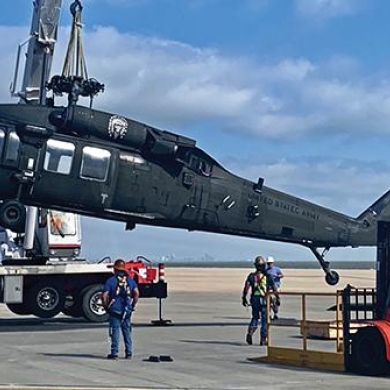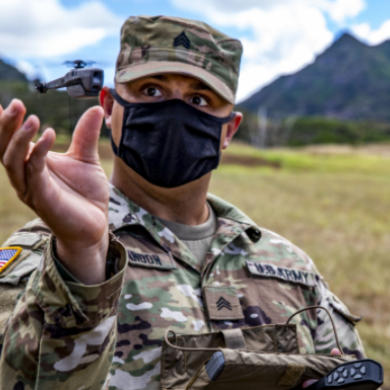30 mars 2022
22 mai 2020 | International, Méga données et intelligence artificielle
DoD selects industry partner to embed AI into programmes and systems

21st May 2020 - 10:21 GMT | by The Shephard News Team
Booz Allen Hamilton will deliver AI-enabled products to the US Joint Artificial Intelligence Center (JAIC) under a $800 million contract from the GSA Federal Systems Integration and Management Center.
If all options are exercised, work will be completed in May 2025.
AI tools will support warfighting operations and be instrumental in embedding AI decision-making and analysis at all tiers of DoD operations.
Booz Allen Hamilton will oversee a mix of technical services and products across the full spectrum of technical support to the JAIC Joint Warfighter National Mission Initiative.
Work will include data labelling, data management, data conditioning, AI product development and the transition of AI products into new and existing fielded programmes and systems across the DoD.
According to the DoD, the overall aim is to leverage the power of data to enable a ‘transformational shift across the DoD that will give the U.S. a definitive information advantage to prepare for future warfare operations'.
Sur le même sujet
-

-

19 avril 2021
How The U.S. Army Will Incorporate New Tech For Aviation Readiness | Aviation Week Network
The U.S. Army plans to use like digital twins and advanced manufacturing to improve aviation sustainment.
-

17 décembre 2020
L'US Army développe un concept innovant de collaboration drones – robots
Afin d'accroître l'endurance et la portée de ses drones, l'US Army entend faire collaborer des essaims aériens et terrestres. Des robots pour recharger des drones. L'US Army se penche actuellement sur un concept innovant visant à faire collaborer drones et robots et ainsi accroître les performances de ses essaims de drones. Afin de pouvoir augmenter les capacités des drones déployés au sein de l'essaim, ces derniers se rendront au sol et se poseront sur des robots, qui leur serviront de plateformes de chargement. Une idée astucieuse afin de considérablement augmenter la portée et l'endurance de ces petits aéronefs. Algorithmes et intelligence artificielle. Afin de conduire ce projet, le laboratoire de recherche de l'US Army a notifié à l'université d'Illinois un accord portant sur 4 ans et un budget de recherche de 8M$. L'enjeu est notamment de pouvoir définir une intelligence artificielle assez performante afin que les drones puissent se poser en toute sécurité sur les robots au sol, et que ces derniers parviennent à suivre les aéronefs en vol. Néanmoins, de nombreux aspects sont à prendre en compte eut égard à l'environnement opérationnel dans lequel ces drones seront déployés. Ils devront conserver leur discrétion, tout en évitant les potentiels obstacles, puisque toute la manœuvre sera réalisée de façon automatique. L'aspect essaim sera également à gérer car l'ambition est de pouvoir mener une mission en continu. Il faudra donc faire alterner les drones dans les phases de chargement afin qu'il n'y ait pas d'interruption de missions. Libérer la charge mentale du soldat. A travers ce projet, l'objectif est également de soulager les soldats, aussi bien d'un point de vue opérationnel que logistique. Les militaires n'auront plus à se charger du pilotage du drone ni à gérer le niveau et le remplacement des batteries. L'ensemble se fera automatiquement et permettra aux opérationnels de se concentrer sur des t'ches à haute valeur ajoutée. https://www.air-cosmos.com/article/lus-army-dveloppe-un-concept-innovant-de-collaboration-drones-robots-23979